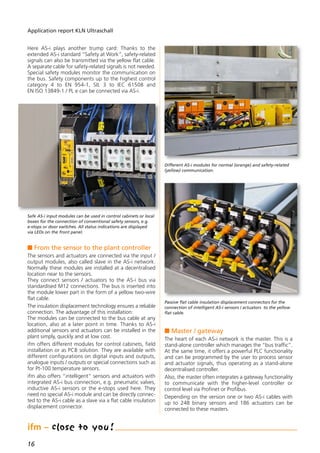The document discusses several applications of ifm sensors and automation systems. It begins with a summary of six success stories from different industries, including precise sensors ensuring quality edges in furniture production, permanent vibration monitoring preventing downtime in bottling, and IO-Link connectivity providing remote access and monitoring for mixing systems. The document encourages readers to learn how ifm solutions automate processes simply and reliably across various industries.







































